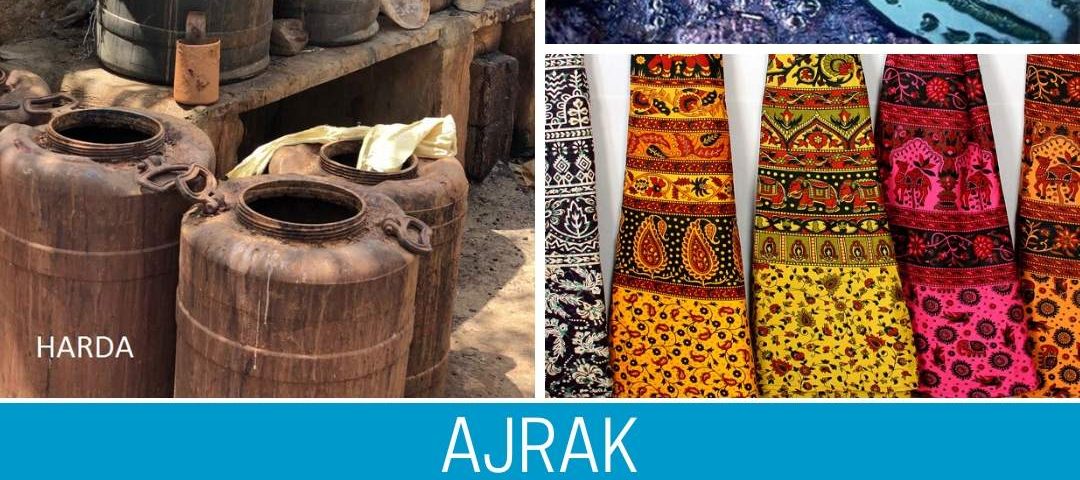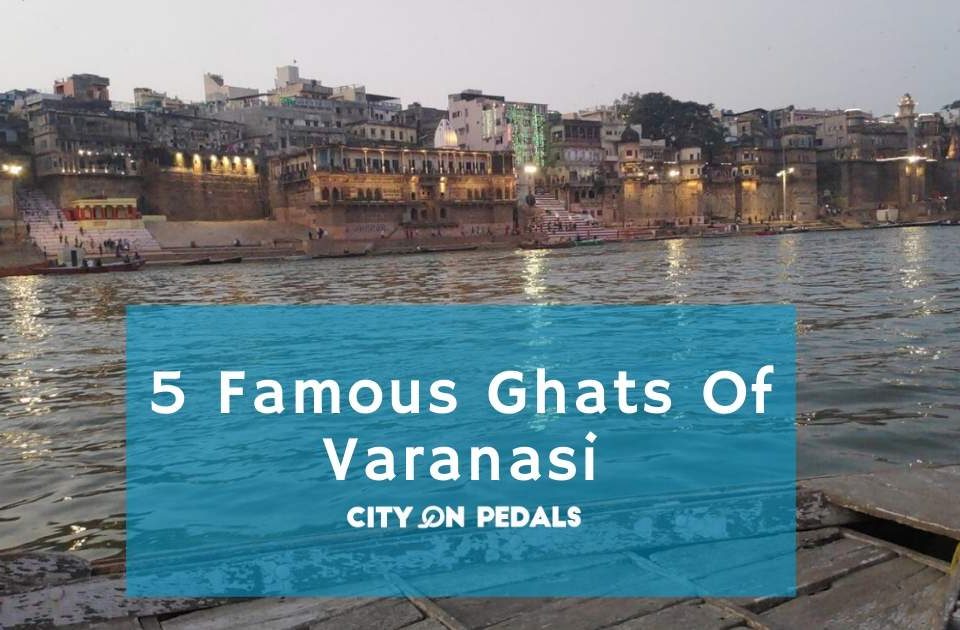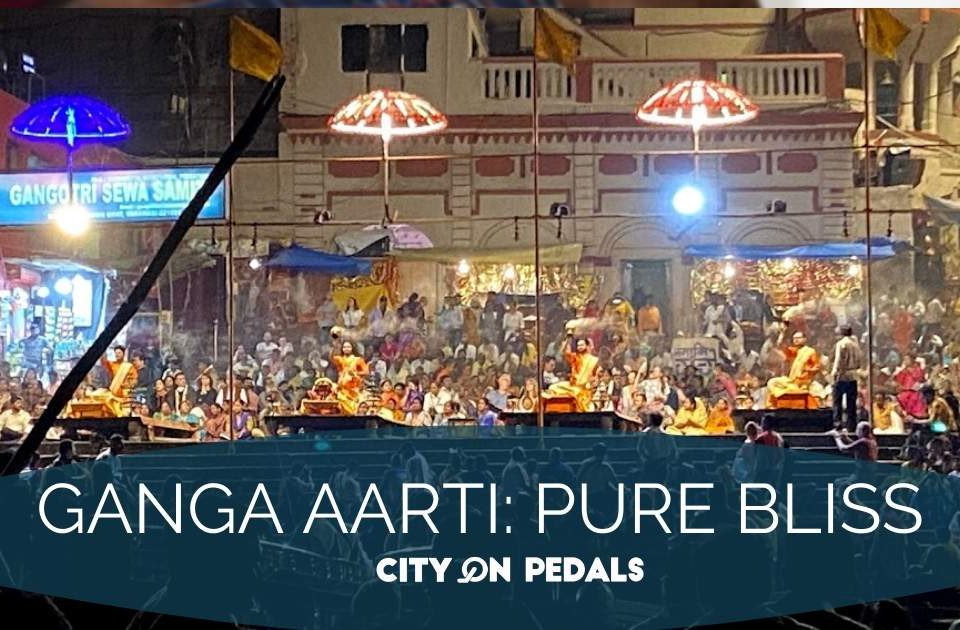- Use promo code "CPT10" & get 10% off on tours
- traveldesk@cityonpedals.com
Ajrak – The Ancient Art Of Fabric Printing

Moving ahead in our series of Block printing, we have one of the most popular forms of painting the fabric which is very common in the Kutch region of Gujarat – Ajrak. It is basically a technique of block-printing textiles that is done using natural dyes, including indigo and madder. It is distinguished by its color- blue with red – and its complex geometric & floral patterns. Its name is derived from ‘azarak’, ‘blue’ and in Kutchi and Persian it means “keep it today”. Ajrak is a legacy of textiles. It is basically a complicated printing process that involves several stages. So it takes skill and patience to make Ajrak as it takes approx. 14-21 days to complete a pattern and a piece of cloth. The resulting cloth is soft against the skin and jewel-like in appearance, pleasing to touch & appealing to the eyes.

The History Of Ajrak
The Ajrak craft was practiced by the Khatri community, living in the banks of river Sindh (Indus in present-day Pakistan). In 16thbcentury, these families migrated to Kutch when the King of Kutch recognized their craft and invited them to settle in the barren uninhabited land, along with dyers, printers, potters and embroiderers. These dyers were Khatri Brahmins initially but when due to their craft they felt the need to settled themselves near the river, so slowly and gradually they converted themselves to Islam and got mingled with the people of the village called Dhamadka.

But as Almighty had some different plans for them so there came a massive earthquake in Kutch in 2001 due to which the block printers were forced to relocate. They settled in Ajrakpur, a village built in coordination with relief NGOs. As of now, there are over one hundred families living in Ajrakpur and 30 official block printing workshops. This has become a primary hub from where almost all of the families in Ajrakpur generate their principal income from. Today the Ajrak traditions are maintained in Kutch, and in Khavda, Dhamadka and Barmer in Rajasthan. The families of Ajrak work exclusively with natural dyes and make fabrics, dupattas, stoles, and sarees, etc. These materials are then sent to all domestic cities of India.
Working In Ajrak
It is said, “where there is a will there is a way”. This is particularly said well for this village and the craftsmen thereat. Nature plays an important role in making Ajrak famous for its craftsmanship. The workers work in total harmony with their environment, where the sun, river, animals, trees, and mud are all part of its making.
These paintings are a long process involving many stages of printing and washing the fabric over and over again with natural dyes and mordants such as harda, lime, indigo, and even camel dung. This is such a unique technique of resist printing that allows exclusive absorption of a dye in the desired area only and prevents the dye to stick to the areas that should be left uncolored.

Unless the other process of printing on the cloth where color is applied directly to the fabric, in Ajrak first a resist paste is applied on the fabric and then dyed. The process is then repeated again and again to get the desired final pattern in deep red and blue hues. It is a gradual process that actually involves thirty separate steps of first preparing the cloth, then mordanted and then dyed. The entire process is time-consuming which takes around 2 weeks resulting in a beautiful piece of Ajrak.

This craft has been on a decline nowadays because of certain modern and quicker methods of printing are prevalent that make use of certain chemical dyes which lower the effect of these traditional styles of printing. But due to the sincere efforts of master craftsmen and the increasing awareness among the urban people, this craft is slowly gaining momentum and is an environmentally friendly method of printing this is gaining importance among the cosmopolitan.






